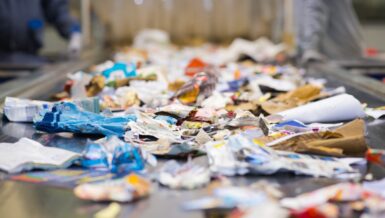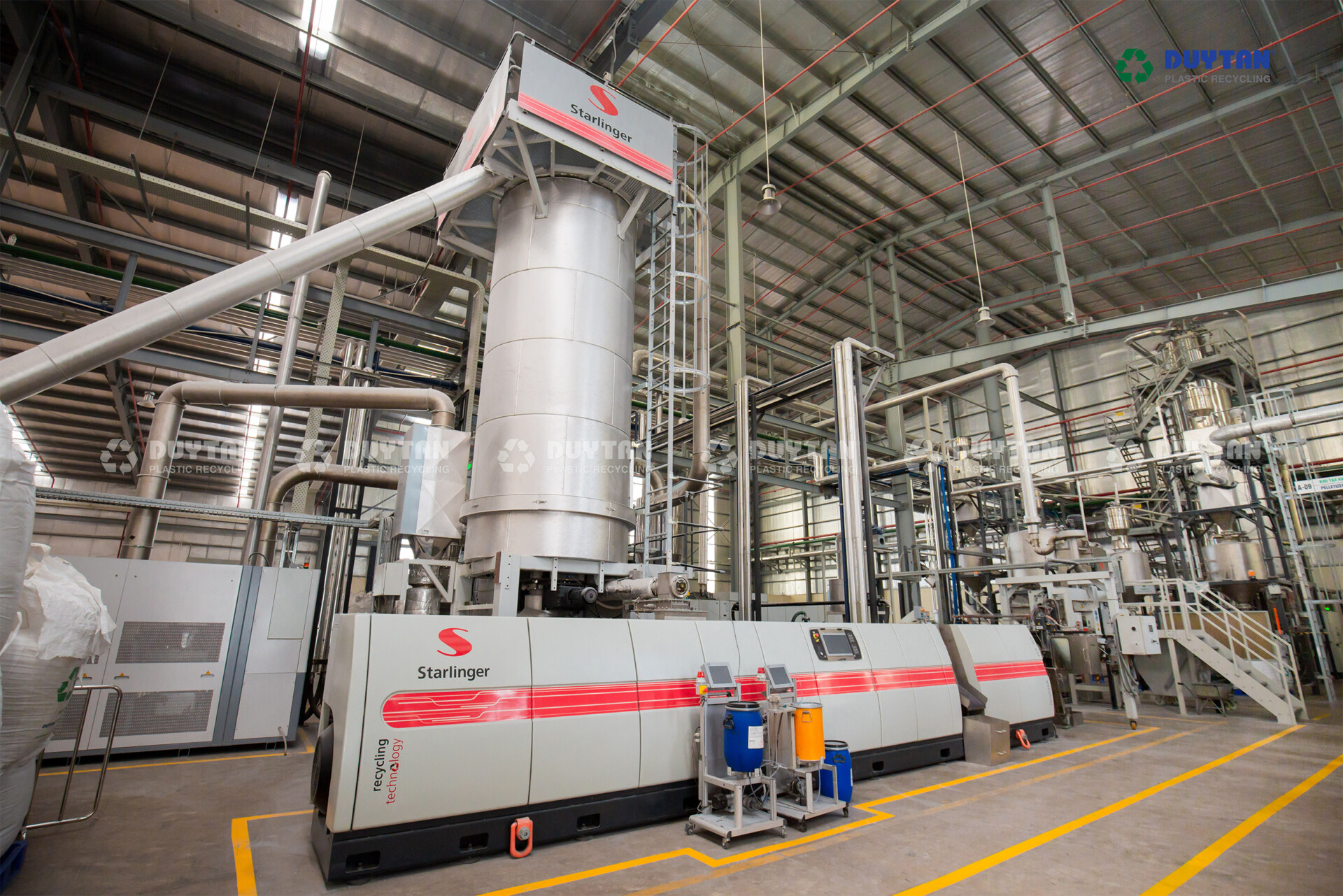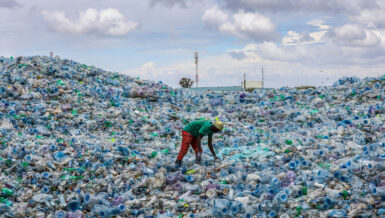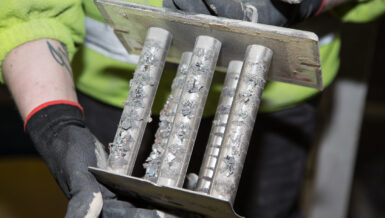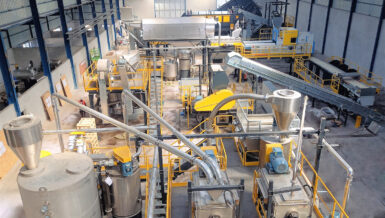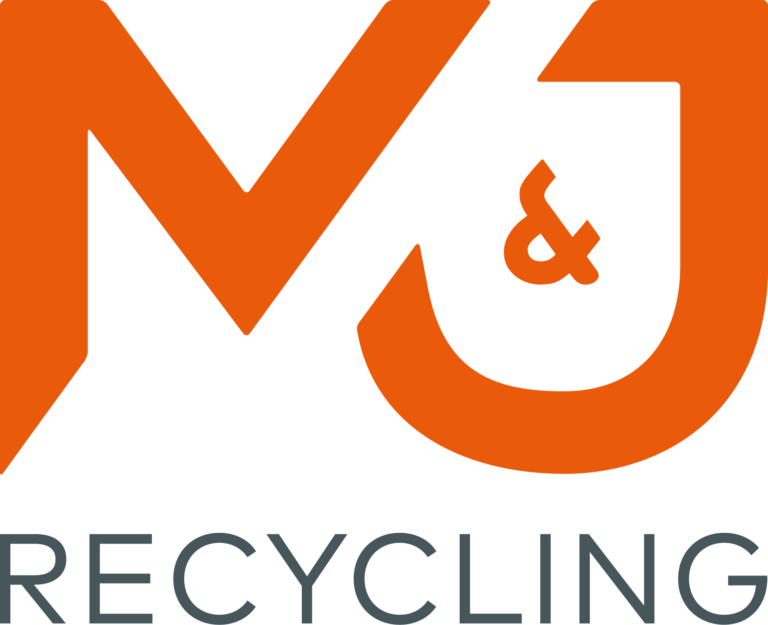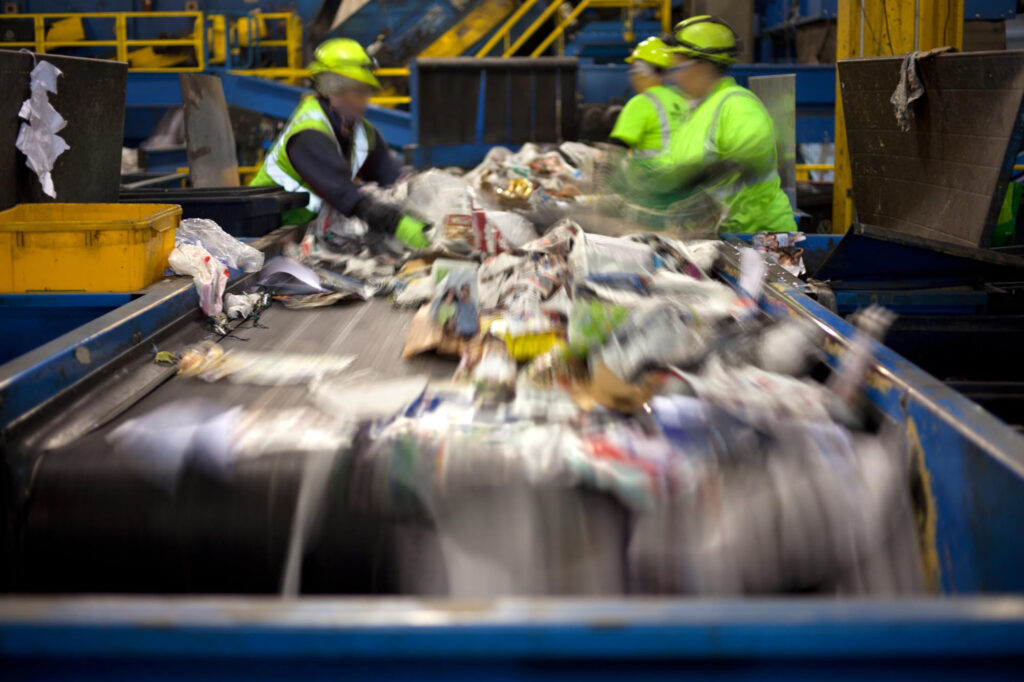Vecoplan AG offers machines and plants that shred, convey and process primary and secondary raw materials – enabling a closed-cycle economy.
More and more industries like the automotive, aircraft and mechanical engineering sectors are relying on plastics nowadays. For example, engineering thermoplastics are extremely temperature-resistant and are characterized by their strength, toughness and damping properties – and this is why they are increasingly replacing metal in the automotive industry. Plastics are also increasingly used by beverage and food manufacturers. PET, for example, is particularly abrasion-resistant and resistant to diluted acids, oils, fats and alcohols.
Used as packaging, this tough plastic protects the food against spoilage, contamination by germs and many harmful substances. However, the more the population increases worldwide and prosperity increases in many regions, the more plastic is produced – plastic that often ends up as waste in nature after use and pollutes the environment to a considerable extent. Against this background, the EU Commission presented its new plastics strategy in January 2018. “Unless we change the way we make and use plastics, by 2050 there will be more plastic swimming in our oceans than fish,” said Commission First Vice-President Frans Timmermans. “The only long-term solution is to reduce plastic waste by increasing recycling and re-use. With the EU Strategy for Plastics, we are driving a new, more circulation-oriented business model onwards,” was the core statement. Plastics must, therefore, be designed and manufactured in such a way that they can be recycled.
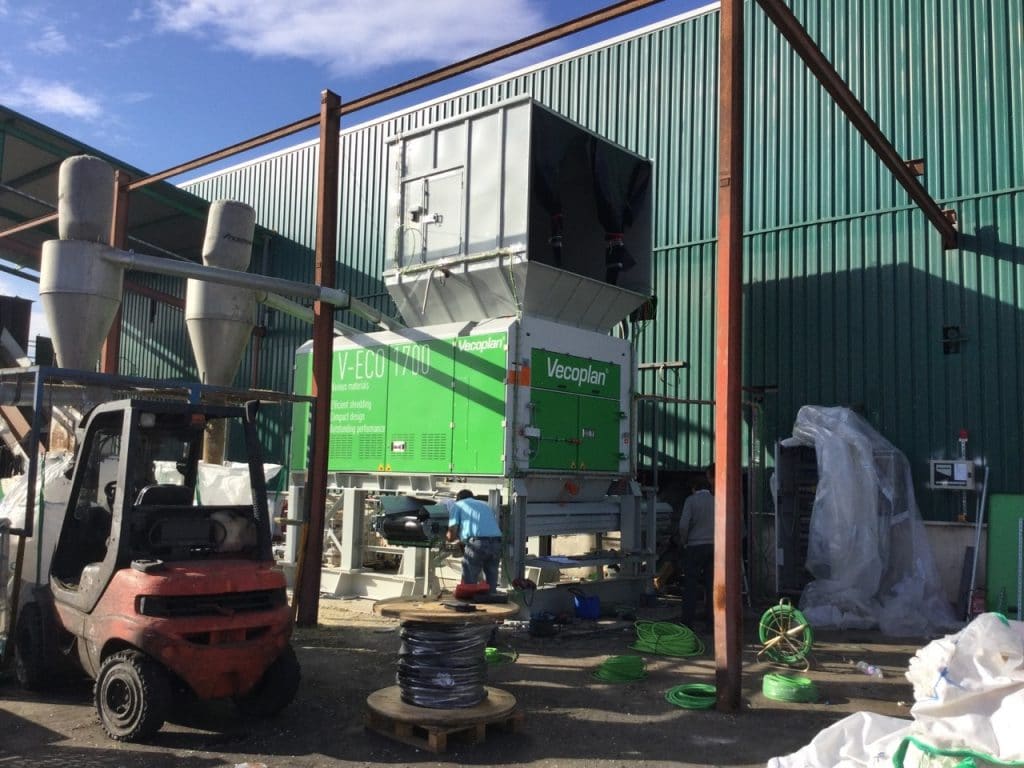
Recycling production waste
In Europe as a whole, 41 per cent of plastic waste is incinerated; only 31 per cent is recycled and used a second time – and that’s not much. “The demand for recycled materials is still too low,” says Martina Schmidt, who heads the Recycling & Waste division at Vecoplan. For this to change, manufacturers of consumer goods, building materials and furniture must rethink their approach. According to forecasts, global demand for plastics will double in the next 20 years. Today, most plastics are still extracted from crude oil, the primary material. However, according to EU policy and European recycling companies, the future should see the proportion of recycled plastic increase noticeably. “The increasing demand for plastics can also lead to a tense supply situation,” explains Martina Schmidt. “For example, delivery times for engineering plastics can be up to four months. This also increases prices. It’s an unsatisfactory situation for processing companies.” The recycling of plastics is an economical solution for companies.
Quality must be absolutely perfect
However, the quality must be right. The purer the recyclate is, the easier it can be processed and used to produce high-quality products. “Without consistent quality, there’s no process reliability, so we won’t have a good end product,” says Martina Schmidt. Production waste in the form of purgings or rejects is, therefore, an economical alternative. The producing industry can directly process these into granulate and return it to the smallest possible production circuit – the granulate possesses the same quality as pure material since contamination and material mixing are excluded. This means that no waste is produced in the first place, and the circuit is closed. This “in-house recycling” offers a number of advantages: Companies spend less on expensive new goods and there is no need for disposal in external recycling facilities.
In the case of collected plastic waste, however, this is not as simple as this – and it can even become expensive. This is also because recycling collected plastic waste is much more complex since it is often soiled and arrives unsorted from the collection points. Lots of water and energy are required to process this material in such a way that it can all be processed into a high-quality regranulate – and only comparatively small quantities are usually produced. “In the ideal scenario, however, regranulate possesses the quality of pure material, so it can be replaced one to one in the final application”, explains Martina Schmidt.
The right technical solution is in demand
This is not quite as easy as it sounds, however – the keyword is “shredding”. Ms Schmidt cites glass-fibre reinforced plastics as an example. “The fibres added to this material must be of a certain length to ensure the required rigidity, she says. “If the fibres are too long, the quality suffers and the same is true if they’re too short.” Viscosity also plays a role when other materials – such as PET – are to be compounded in the extruder. Material flow behaviour is improved if shredding takes place in a single-stage process rather than in a multi-stage process. Vecoplan works closely with its customers to find the right solution for the application in question. The machine manufacturers develop plants which they adapt to the individual applications in numerous tests carried out in their in-house technical centre.
Martina Schmidt repeats the question: “What distinguishes a machine that’s necessary… and which components are important? “This depends on the subsequent processing steps, which can be washing, sorting, extruding, etc. As pre-treatment experts and with our maximum degree of flexibility, we can optimally adapt our shredding technology to the materials in question and to the subsequent processes. This lays the foundation for efficient and high-quality further processing. In the case of our shredders, it’s the cutting geometry that is decisive. We can exactly adapt our plants to input and output requirements by changing the rotors and cutters and selecting the right screen. The drive technology and sturdy design are also very important because they prevent premature wear when shredding abrasive materials like glass fibre-reinforced plastics.
How the future will look
Vecoplan shows exactly how the cycle can be closed and that the material quality of today’s regranulates can be almost pure. “Machine manufacturers in Europe have the world’s best technologies and the necessary process engineering know-how to produce high-quality recycled materials,” says Martina Schmidt.




